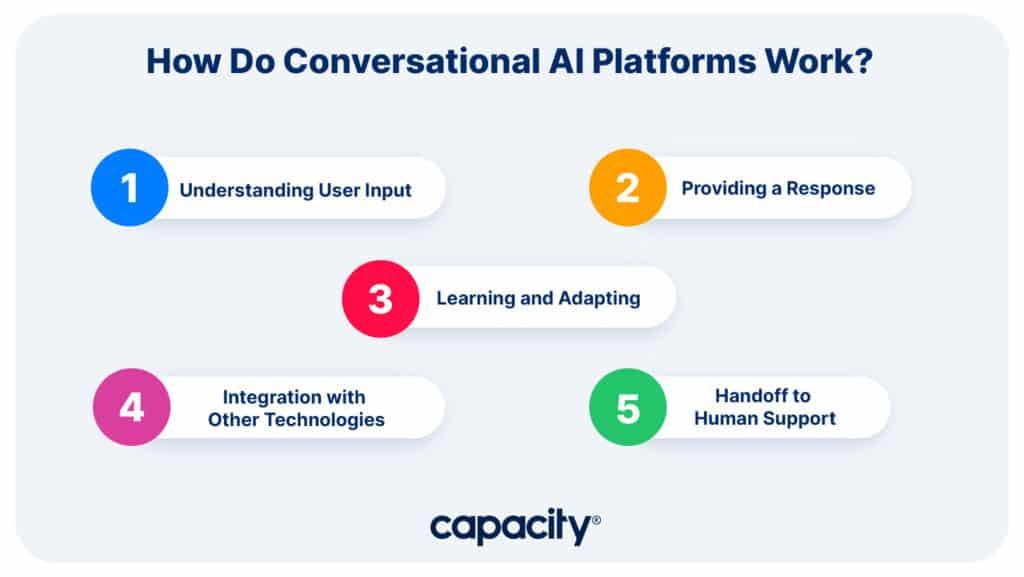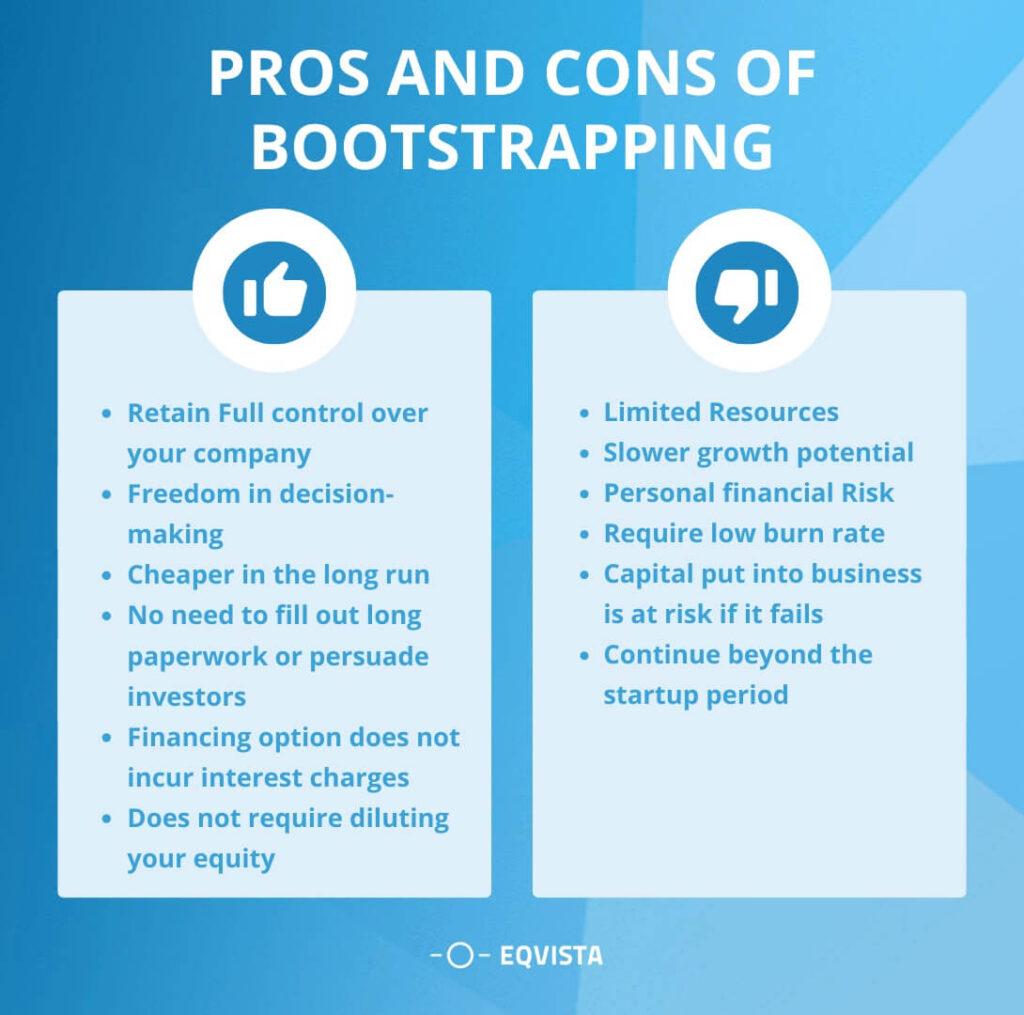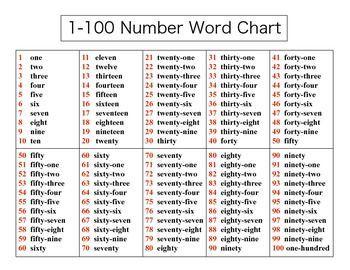
Welcome to the ultimate guide that will transform the way you communicate—“99 Words that Sell”! Have you ever wondered why some phrases jump off the page, capturing attention and sparking interest, while others fade into the background? The secret often lies in the words we choose. Whether you’re crafting persuasive marketing copy, writing engaging social media posts, or simply trying to make your point more compelling, the right words can make all the difference. In this guide, we’ll explore 99 powerhouse words that have the potential to boost your messaging and drive action. Get ready to supercharge your communication skills and watch your ideas come to life! Join us as we dive into the art of using language that resonates and persuades. Let’s unlock the potential of words together!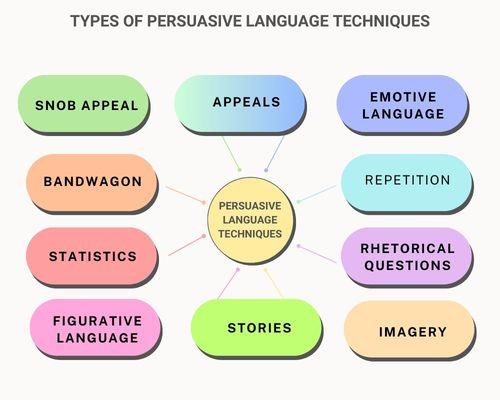
Unlocking the Power of Persuasive Language
Words have the remarkable ability to evoke emotions, capture attention, and compel action. When it comes to selling, the right words can make a world of difference in shaping perceptions and influencing decisions. Understanding how to effectively wield persuasive language is crucial for marketers, entrepreneurs, and anyone looking to engage an audience.
Here are some key elements to consider when tapping into the power of persuasive language:
- Emotional Appeal: Words that resonate emotionally can create a strong connection with your audience. Think about terms like “love,” “freedom,” or “dream.” These evoke feelings and can motivate people to act.
- Urgency: Incorporate phrases that convey scarcity or a time-limited offer, such as “limited edition” or “only available today.” This instills a sense of urgency that can spur immediate action.
- Trust and Credibility: Using words like “guaranteed,” “proven,” and “trusted” can help build confidence in your product or service. People are more likely to engage when they feel secure in their choices.
- Imagery: Descriptive language that paints a vivid picture can captivate your audience’s imagination. Phrases like ”breathtaking views” or “luxurious comfort” can transport potential customers into the experience you’re offering.
- Inclusivity: Words that foster a sense of belonging, such as “join,” “together,” or “community,” can make your audience feel part of something bigger, encouraging them to participate.
To effectively organize your persuasive vocabulary, it can be helpful to create a reference table. Here’s a simple example:
| Category | Words/Phrases |
|---|---|
| Emotional | “Inspire,” “Connect,” ”Transform” |
| Urgency | “Act Now,” “Last Chance,” “Don’t Miss Out” |
| Trust | “Certified,” “Backed by Science,” “Endorsed” |
| Imagery | “Discover the beauty,” “Experience the thrill” |
| Inclusivity | “Join us,” “Be part of our journey” |
Moreover, remember that context matters. Tailoring your language to fit the specific audience and medium—whether it’s a website, email, or social media—can significantly enhance your message’s effectiveness. Always consider what resonates best with your target demographic, and choose words that reflect their desires and pain points.
Ultimately, mastering persuasive language is about understanding your audience and tapping into their motivations. With the right words, you can unlock doors to opportunities, enhance your marketing strategies, and ultimately drive sales. So, the next time you’re crafting your message, think carefully about the words you choose—they could be your most powerful tool.
Why Words Matter in Selling Anything
Words hold incredible power in the realm of sales. They can ignite emotions, shape perceptions, and ultimately persuade a consumer to make a purchase. When you understand the nuances of language, you unlock the ability to connect with your audience on a deeper level. Here are a few reasons why the right words can make all the difference:
- Emotional Resonance: Words can evoke feelings that resonate with your audience. When you tap into their desires and pain points, you create a narrative that feels personal and relatable.
- Trust Building: Using language that conveys authenticity and transparency fosters trust. Customers are more likely to buy from brands that communicate openly and honestly.
- Clarity and Understanding: Simple, clear language eliminates confusion. When potential buyers understand what you offer and how it benefits them, they are more likely to proceed with a purchase.
Moreover, the art of persuasion hinges on the choice of words. Certain phrases can trigger a sense of urgency, exclusivity, or necessity. For instance, using terms like “limited time offer” or “exclusive access” can create a fear of missing out, prompting quicker buying decisions.
Consider the difference between the phrases: “Buy now” and “Get yours today!” The latter not only encourages action but also adds a sense of immediacy and personal connection. This subtle shift can lead to increased conversions.
Additionally, the way you present information matters. A well-structured description alongside engaging language can transform a mundane product into a desirable one. For example, instead of stating “This chair is comfortable”, you could say “Sink into luxury with our ergonomically designed chair that cradles your body and supports your posture.” This paints a vivid picture in the mind of the buyer.
To illustrate the importance of word choice in sales, here’s a simple comparison table:
| Basic Terms | Persuasive Phrases |
|---|---|
| Cheap | Affordable luxury |
| Buy | Claim your offer |
| Good | Exceptional quality |
| Fast | Speedy delivery |
Ultimately, the words you choose can transform the mundane act of selling into an engaging dialogue with your customers. By crafting messages that resonate, inspire, and motivate action, you not only drive sales but also build lasting relationships. Remember, it’s not just about what you sell; it’s about how you make your customers feel through every carefully chosen word.
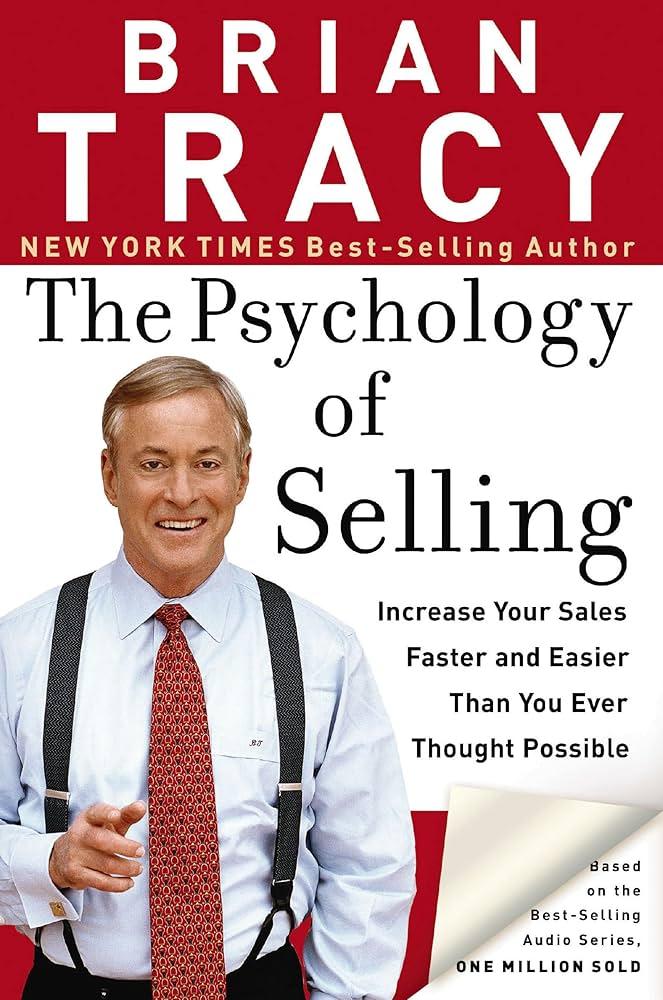
The Psychology Behind Effective Selling Words
Understanding the psychological factors that influence buying decisions is essential for anyone involved in sales. The words you choose can evoke emotions, create urgency, and ultimately drive action. Words carry power; they can inspire trust, evoke desire, and motivate consumers to make purchases. By tapping into the psychology of language, you can enhance your selling strategies significantly.
One of the most impactful elements of effective selling words is their ability to resonate with the buyer’s needs and desires. When crafting your message, consider the following psychological triggers:
- Fear of Missing Out (FOMO): Words that convey scarcity or urgency, such as “limited time” or ”only a few left,” can spur quick decision-making.
- Social Proof: Utilizing phrases like “best-seller” or “trending now” taps into the human instinct to conform to social norms.
- Power of Free: Everyone loves a bonus. Adding words like “free” or ”complimentary” can attract attention and encourage action.
- Exclusivity: Phrases such as ”members only” or “exclusive offer” can make customers feel special, increasing their likelihood to buy.
When you use these psychological triggers, you’re not just selling a product; you’re creating an experience that appeals to the buyer’s emotions. For example, when someone sees the word “guaranteed,” it instills a sense of security and trust. It reduces the perceived risk associated with making a purchase and promotes confidence in their decision.
Additionally, the use of sensory words can enhance the appeal of your offerings. Words that evoke sight, sound, taste, touch, or smell can transport a potential buyer into a vivid experience. Consider these examples:
| Sense | Descriptive Word |
|---|---|
| Sight | Vibrant |
| Sound | Melodious |
| Taste | Succulent |
| Touch | Silky |
| Smell | Aromatic |
Integrating these sensory words into your sales copy can make the product feel more tangible, ultimately enhancing the emotional connection. When consumers can visualize or imagine the experience, they are more likely to commit to a purchase.
Moreover, the rhythm and flow of your words also play a crucial role. Short, punchy phrases can create excitement, while longer, descriptive sentences can build intrigue and detail. Balancing these elements keeps the reader engaged and encourages them to explore further.
is about creating a dialogue that resonates with the buyer on multiple levels. By understanding the emotional triggers and sensory experiences that influence decision-making, you can craft messages that not only sell but also build lasting relationships with your customers. Embrace the power of language, and transform your selling approach into a compelling narrative that captivates and converts.
Crafting Irresistible Headlines with Strong Verbs
Headlines are the first impression you make on your audience, and strong verbs are the key to unlocking that potential. They create a sense of urgency and action that compels readers to dive deeper into your content. When you choose dynamic verbs, you transform a mundane headline into an irresistible invitation. Here are some strategies to harness the power of strong verbs in your headlines:
- Start with Action: Use verbs that prompt immediate action. Words like “Boost,” “Launch,” and “Discover” encourage readers to take the next step.
- Be Specific: Instead of vague terms, opt for precise actions. For example, “Elevate Your Marketing Game” is more effective than simply saying “Improve Marketing.”
- Inspire Curiosity: Verbs that evoke curiosity can pique interest. Phrases like “Unlock Secrets” or “Reveal Strategies” invite readers to find out more.
A compelling headline often balances strong verbs with engaging modifiers. This combination can elevate your message and make it more appealing. Check out the table below for examples of effective verb-adjective pairings:
| Strong Verb | Descriptive Adjective | Sample Headline |
|---|---|---|
| Ignite | Profitable | Ignite Your Profitable Ideas Today! |
| Transform | Remarkable | Transform Your Remarkable Skills into Cash! |
| Elevate | Unforgettable | Elevate Your Unforgettable Brand Experience! |
Another technique for crafting compelling headlines is to create a sense of urgency. Verbs like “Act,” “Now,” and “Rush” can motivate readers to engage without delay. For instance, “Act Now to Claim Your Free Guide!” conveys immediacy, making it hard to resist.
Incorporating emotional triggers through powerful verbs can also enhance the appeal of your headlines. Using words such as “Empower,” “Inspire,” and “Revitalize” resonates with readers on a personal level, encouraging them to envision the benefits they’ll receive. A headline like “Empower Your Financial Future” not only grabs attention but also speaks to the aspirations of your audience.
Lastly, always test different headlines with various strong verbs to see what resonates best with your audience. A/B testing can reveal which words spark the most interest, allowing you to refine your approach and maximize engagement. Remember, the right verb can convert a simple statement into a compelling call to action.
Emotional Triggers: Words that Connect with Your Audience
Words have an extraordinary ability to evoke emotions and foster connections. When you harness the right emotional triggers, your messaging can resonate deeply with your audience, prompting them to take action. Understanding which words elicit these feelings is key to crafting compelling content that sells.
Here are some emotional triggers to incorporate into your messaging:
- Empathy: Show that you understand your audience’s struggles and aspirations. Phrases like “we’ve been there” or “you deserve better” create a sense of shared experience.
- Belonging: Words that foster a sense of community can be incredibly powerful. Phrases like “join us” or “be part of our family” encourage your audience to feel included.
- Security: Use words that convey safety and stability, such as “guarantee,” “risk-free,” or ”proven,” to build trust with your audience.
- Excitement: Generate enthusiasm with words like ”exclusive,” “limited-time,” and “unleash” to create a sense of urgency and anticipation.
- Inspiration: Invoking a sense of motivation can be achieved with phrases like ”transform your life” or “unlock your potential,” igniting passion in your audience.
To effectively utilize these triggers, let’s break down some emotions and their corresponding impactful words. The following table highlights some key emotional drivers and the words that can strongly connect with your audience:
| Emotional Driver | Trigger Words |
|---|---|
| Empathy | Understand, Relate, Connect |
| Belonging | Join, Welcome, Family |
| Security | Protected, Assured, Risk-free |
| Excitement | Exclusive, Limited, Unleash |
| Inspiration | Transform, Empower, Achieve |
The art of persuasion lies not only in the facts you present but in the feelings you evoke. For example, instead of saying, “Our service is affordable,” you might say, “Imagine enjoying premium benefits without breaking the bank.” This subtle shift transforms your message from purely informational to deeply engaging.
Additionally, consider the emotional state of your audience. In times of uncertainty, words that provide reassurance and clarity resonate more than those that may seem frivolous. Tailoring your language to the current mood of your audience can significantly enhance your message’s effectiveness.
it’s about building a relationship through your words. When you connect emotionally with your audience, you not only sell a product or service but also create a lasting bond that encourages loyalty and trust. Choose your words wisely, making sure they reflect the emotions you want to evoke, and watch as your audience responds positively.

Building Trust Through Authentic Language
In an age where consumers are bombarded with marketing messages, the use of authentic language can be a game changer. It’s not just about what you say, but how you say it. Genuine communication fosters a sense of trust and reliability, making it easier for your audience to connect with your brand.
When crafting your message, consider using words that resonate on a personal level. Here are some essential elements to incorporate:
- Transparency: Be open about your processes and values. This invites customers to engage with your brand more deeply.
- Empathy: Show that you understand your audience’s needs and concerns. Acknowledge their feelings, and let them know you’re on their side.
- Storytelling: Share real-life stories or experiences that reflect your brand’s journey. This makes your communication relatable and memorable.
To illustrate the power of authentic language, let’s look at a comparison of typical sales language vs. authentic language:
| Typical Sales Language | Authentic Language |
|---|---|
| “Buy now and save!” | “We’d love for you to experience our product and see how it can help you.” |
| “Limited time offer!” | “We want to make sure you have the opportunity to try our service.” |
| “Best product on the market!” | “Here’s how our product has made a difference for customers like you.” |
Choosing the right words can significantly impact how your message is received. Words that evoke trust, community, and support not only engage your audience but also foster loyalty. Think about the language that reflects your brand’s personality and aligns with your core values.
Furthermore, be consistent. Authenticity shines through when your messaging aligns across all channels—whether it’s your website, social media, or customer service interactions. This cohesive approach reinforces trust and helps cultivate long-lasting relationships.
Ultimately, is about forming a connection. Your audience wants to feel valued and understood. By using sincere, straightforward language, you invite them to be a part of your brand story, creating a community of loyal customers who believe in what you stand for.

Creating Urgency with Time-Sensitive Phrases
Creating a sense of urgency in marketing can be a game-changer. When customers feel that time is running out, they are more likely to take action. By incorporating time-sensitive phrases into your sales copy, you can effectively prompt your audience to make quicker decisions, driving conversions and boosting sales.
Here are some powerful time-sensitive phrases you can weave into your messaging:
- Act Now: Encourages immediate action and conveys a sense of necessity.
- Limited Time Offer: Implies scarcity, making your deal more appealing.
- Last Chance: Suggests that the opportunity won’t come around again, pushing for urgency.
- Only X Left: Highlighting a specific quantity creates a fear of missing out.
- Ends Soon: This phrase signals that time is running out, creating an incentive to act faster.
- Don’t Miss Out: Evokes a sense of FOMO (Fear of Missing Out), encouraging prompt action.
When using these phrases, it’s important to complement them with compelling offers. A well-crafted message combined with urgency can lead to higher engagement rates. Here’s a quick table showcasing effective combinations:
| Phrase | Effective Combination |
|---|---|
| Act Now | Get 20% off your purchase! Limited to the first 100 customers! |
| Only X Left | Only 5 spots left for our exclusive webinar! |
| Ends Soon | Sale ends in 24 hours! Don’t wait! |
| Last Chance | Last chance to grab our best-selling product at a discount! |
Pairing urgency with clear, concise information can significantly enhance its effectiveness. Instead of merely stating “Act Now,” consider adding a tangible benefit like, “Act Now to receive a free gift with your order!” This not only serves to create urgency but also provides an additional incentive, making the offer irresistible.
Furthermore, remember to create a visual cue that aligns with your urgency phrases. For instance, using countdown timers or highlighting limited quantities can visually reinforce the message. A simple countdown graphic can evoke a sense of immediate action, nudging customers toward purchasing decisions.
In essence, the key to creating urgency lies in the combination of effective language, compelling offers, and clear visual elements. By mastering these time-sensitive phrases, you can cultivate a more dynamic shopping experience that motivates your audience to act swiftly and decisively.

The Art of Storytelling: Words that Engage and Inspire
In the world of marketing and communication, the right words hold immense power. They can capture attention, evoke emotions, and compel action. To master the art of storytelling, one must understand the nuances of language and how to wield it effectively. Here’s a compilation of some of the most impactful words that can elevate your messages, making them irresistible to your audience.
Crafting an Emotional Connection
Using words that resonate on a personal level is crucial. When your audience feels something, they are more likely to engage with your message. Consider using:
- Imagine – Invites the audience to visualize possibilities.
- Discover – Sparks curiosity and exploration.
- Empower – Instills a sense of strength and control.
- Transform - Suggests a positive change is attainable.
Building Trust and Credibility
Trust is foundational in any relationship, especially between brands and consumers. Words that convey reliability can greatly enhance your narrative:
- Guaranteed – Offers assurance and confidence.
- Proven - Suggests evidence and validity.
- Authentic – Highlights genuineness and transparency.
- Expert – Positions you as a knowledgeable authority.
Creating Urgency
When you want your audience to act swiftly, certain words can create a sense of urgency, prompting immediate response:
- Limited - Implies scarcity, making the offer more enticing.
- Now – Instills a call to action that feels immediate.
- Exclusive – Suggests a special opportunity available to few.
- Don’t Miss Out – Plays on fear of loss to motivate action.
Encouraging Action
Ultimately, your goal is to drive action. Using compelling verbs can urge your audience to take the leap:
- Join – Creates a sense of community.
- Unlock – Suggests revealing something valuable.
- Start – Invokes the idea of beginning a journey.
- Claim – Encourages ownership and entitlement.
Combine these words strategically to craft powerful narratives that resonate. Remember, the essence of storytelling lies not just in what you say, but how you make your audience feel. By mastering the language of engagement, you’ll not only capture attention but also inspire action.

Words that Overcome Objections and Doubts
When it comes to closing the deal, the right words can make all the difference. Overcoming objections and doubts is essential in persuading potential customers to take that next step. Here are some powerful phrases and words that can help you navigate those tricky conversations.
- Imagine: This word invites your audience to visualize themselves in a desirable situation, making your offer feel personal and attainable.
- Guaranteed: This term instills confidence. By offering a guarantee, you reduce perceived risk, making it easier for customers to say yes.
- Proven: Using this word suggests that your product or service has a track record of success, which can alleviate doubts from skeptical buyers.
- Exclusive: Everyone loves feeling special. By positioning your offer as exclusive, you create a sense of urgency and importance.
- Join: This word fosters a sense of community and belonging, making your audience feel like they are about to be part of something bigger.
It’s crucial to acknowledge objections directly and use language that emphasizes understanding and empathy. Phrases like “I understand your concern” or “That’s a valid point” can go a long way in building rapport and trust.
Additionally, you want to counter objections with positive framing. Instead of saying “Don’t worry about the cost,” try “Invest in your future today.” This shifts the focus from a potential negative to a positive outcome.
| Objection | Overcoming Phrase |
|---|---|
| I’m not sure if I need this. | “Think of how much easier your life could be.” |
| It’s too expensive. | “Consider the long-term savings this will bring.” |
| I have to think about it. | “What’s holding you back? Let’s address those together.” |
Another effective strategy is to leverage social proof. Words like “thousands of satisfied customers” or “join the ranks of our successful users” can reinforce your credibility and showcase the value of your offer.
always end on a positive note, using words like “excited” and “ready” to inspire action. A closing line like “We’re excited to help you start this journey!” can create an enthusiastic atmosphere that encourages the audience to move forward.
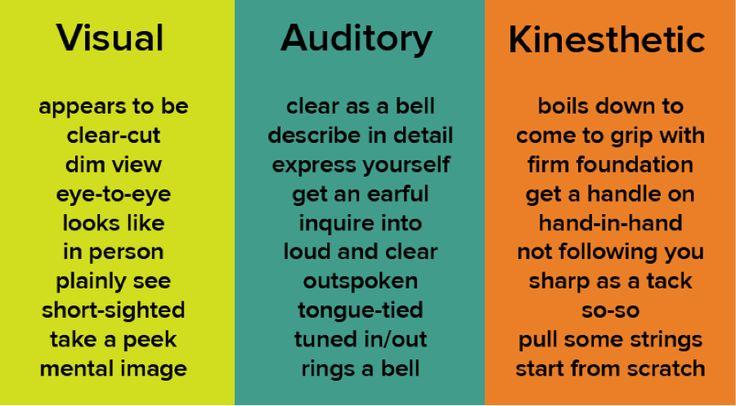
Using Sensory Language to Enhance the Customer Experience
Imagine walking into a room filled with the rich aroma of freshly brewed coffee. It’s not just about the drink; it’s about the entire experience. When you use sensory language in your marketing, you’re inviting customers to step into a vivid world where they can feel, taste, and smell the essence of what you offer. This is the power of sensory language—it transcends the ordinary, creating an emotional connection that plain descriptions simply cannot achieve.
To effectively engage your audience, focus on the five senses. Here’s how:
- Sight: Use descriptive imagery that paints a picture. For instance, instead of saying ”red apples,” try “glossy crimson apples that glisten in the sunlight.”
- Sound: Invoke auditory imagery. Describe a product as “the gentle crackle of a warm fireplace, inviting you to unwind and relax.”
- Smell: Capture olfactory sensations. Share how your product emits “the intoxicating scent of citrus and cinnamon, enveloping your space in warmth and cheer.”
- Taste: Make flavors come alive. Instead of “a chocolate bar,” say “a luscious chocolate bar that melts like velvet on your tongue, with hints of caramel and sea salt.”
- Touch: Create tactile sensations. Describe a fabric as “silky and smooth against your skin, like a gentle caress that makes you feel pampered.”
Consider the difference in impact between standard and sensory-rich descriptions. Here’s a quick comparison:
| Standard Description | Sensory Description |
|---|---|
| A smartwatch | A sleek smartwatch that effortlessly tracks your fitness goals, adorned with a vibrant screen that lights up with every notification. |
| A scented candle | A hand-poured candle that releases a calming blend of lavender and chamomile, filling your home with soothing tranquility. |
| A pair of shoes | A pair of lightweight sneakers that hug your feet, designed to provide cloud-like comfort with every step you take. |
Using sensory language not only makes your products more appealing but also helps customers envision themselves enjoying their purchase. They begin to associate positive feelings with your brand, increasing their likelihood of buying and returning. It transforms your marketing from mere words into an experience—a journey that captivates their imagination.
Moreover, sensory descriptions can significantly enhance storytelling in your marketing strategy. When customers can visualize a scene or feel a sensation through your words, they are more likely to create a personal connection to the product. This is why storytelling paired with sensory language is a powerful combination; it makes your brand memorable and relatable.
Ultimately, the goal is to create an experience that resonates. Sensory language helps you craft moments that linger in your customers’ minds long after they’ve left your website. By appealing to their senses, you not only enhance their shopping experience but also build loyalty and inspire them to share their experiences with others. This is the essence of effective marketing; it’s about creating a world that they want to be a part of.

Incorporating Power Words in Your Marketing Strategy
Power words are your secret weapon in captivating your audience and driving action. When woven into your marketing strategy, they do more than just enhance your message; they create emotional connections and compel consumers to engage. These words evoke feelings, spark curiosity, and build trust. Let’s explore how to effectively incorporate them into your marketing materials.
Start by identifying the core emotions you want to evoke in your audience. Every product or service has a unique selling proposition, and power words can amplify that message. For example:
- Excitement: Discover, Unleash, Ignite
- Trust: Guaranteed, Proven, Authentic
- Urgency: Limited, Now, Hurry
Next, strategically place these power words throughout your content. Whether in headlines, call-to-action buttons, or product descriptions, their placement matters. For instance, instead of saying, “Join our newsletter,” try “Join our exclusive newsletter for insider tips!” The latter not only sounds more inviting but also emphasizes the uniqueness of what you’re offering.
To demonstrate the effectiveness of power words, consider using a simple table to highlight their impact:
| Standard Phrase | Enhanced with Power Words |
|---|---|
| Buy now | Grab your limited-time offer now! |
| Learn more | Unlock the secrets to success! |
| Sign up | Join our thriving community today! |
Additionally, consider your audience’s language and preferences. The right power words can vary based on demographics and psychographics. Test various combinations to see which resonate best. A/B testing different headlines or calls to action can provide valuable insights into what drives conversions.
Lastly, remember that authenticity is key. While power words can enhance your marketing strategy, overusing them or using them disingenuously can backfire. Always strive for a balance between persuasive language and genuine communication. Your audience will appreciate honesty and clarity, leading to stronger, lasting relationships.
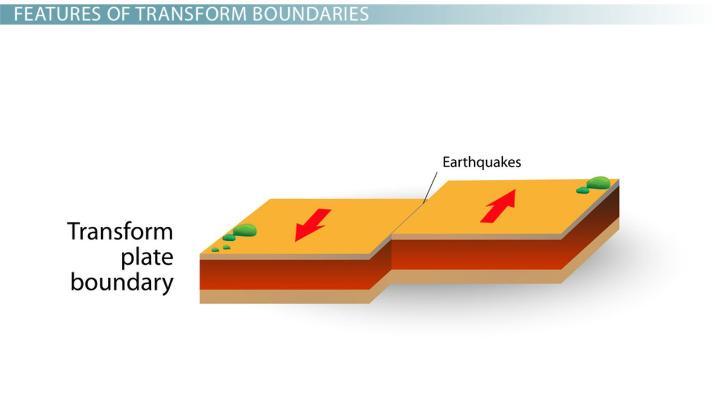
Transforming Features into Benefits with the Right Words
When it comes to selling, the magic often lies in the words we choose. Features may describe a product’s specifications or attributes, but it’s the benefits that resonate with customers’ desires and emotions. To truly captivate your audience, it’s essential to transform dry features into compelling benefits that speak directly to their needs.
Consider the following examples:
- Feature: Water-resistant up to 50 meters.
- Benefit: Dive into adventure without worrying about your watch—perfect for the active lifestyle enthusiast.
- Feature: Made with 100% organic cotton.
- Benefit: Enjoy ultimate comfort while supporting sustainable practices for a healthier planet.
Turning features into benefits requires a deeper understanding of your target audience. What do they value? Here are some tips to uncover the benefits hidden within your features:
- Know Your Audience: Research their pain points, desires, and lifestyle choices. This insight will help you connect on a personal level.
- Use Emotional Triggers: Words that evoke feelings—like “freedom,” “security,” or “joy”—can create a powerful connection between your product and the customer’s aspirations.
- Visual Language: Paint a picture with your words. Instead of saying “high-resolution display,” describe it as “vivid colors that bring your media to life.”
To make the transformation clearer, here’s a quick comparison table highlighting features and their corresponding benefits:
| Feature | Benefit |
|---|---|
| Bluetooth connectivity | Seamlessly connect your devices and enjoy hands-free convenience. |
| Long-lasting battery life | Stay powered up throughout the day, so you never miss a moment. |
| Ergonomic design | Experience comfort during long hours of use, enhancing your productivity. |
Remember, the key is to highlight how your product improves the customer’s life. Instead of focusing solely on what your product is, emphasize what it does for the customer. This approach creates a narrative that aligns their needs with your offerings.
Ultimately, transforming features into benefits makes your sales copy not just informative, but also engaging and persuasive. The right words can elevate your marketing strategy and turn casual browsers into loyal customers.

The Importance of Clarity: Simple Words that Work
In the world of marketing and communication, clarity is king. When crafting a message, whether it’s for an advertisement, a blog post, or a sales pitch, using simple, direct words can make all the difference. The goal is to connect with your audience, and using uncomplicated language helps build that connection more effectively.
Consider the following reasons why straightforward language is essential:
- Accessibility: Simple words ensure that your audience can easily understand your message, regardless of their background or familiarity with the topic.
- Engagement: Clear language invites readers in, encouraging them to stay longer and engage with your content.
- Persuasiveness: Simplicity often resonates more deeply, making it easier to persuade your audience to take action.
- Memorability: Messages that are easy to understand are more likely to be remembered, which is crucial in a crowded market.
To illustrate the power of simplicity, let’s look at some effective words that can elevate your messaging:
| Word | Effect |
|---|---|
| Free | Attracts attention instantly; who doesn’t love something for nothing? |
| Simple | Conveys ease, making the solution feel attainable. |
| Guaranteed | Builds trust; customers love the reassurance of a promise. |
| Instant | Creates urgency and excitement; who doesn’t want results now? |
When you focus on using these impactful words, you create a sense of urgency and importance around your offerings. Moreover, your audience is more likely to respond positively when they feel understood and valued through your clear communication.
Incorporating simple words and phrases into your content is not just about being straightforward; it’s about crafting a message that resonates. Think of your audience as a friend you’re excited to share something meaningful with. The clearer you are, the more likely they are to join you on the journey you’re inviting them to take.
Embrace clarity in your writing. Use words that not only communicate but also inspire action. When your audience understands your message, they’re more likely to act on it, leading to fruitful results for your business.
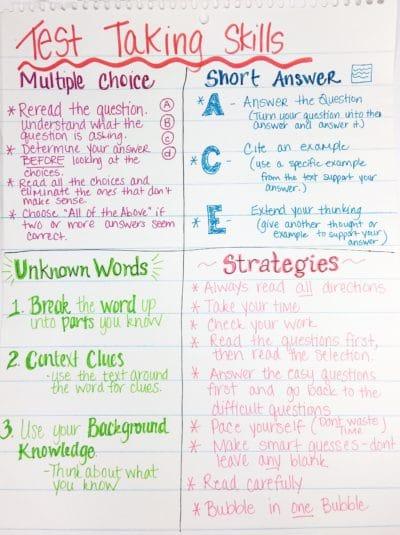
Testing and Tweaking Your Word Choices for Maximum Impact
When it comes to crafting compelling content, the words you choose can make all the difference. It’s essential to test and tweak your word selections to ensure they resonate with your audience. A few simple adjustments can elevate your message and boost engagement. Here’s how to refine your word choices for maximum impact:
- Know Your Audience: Understanding who you are writing for is crucial. Tailor your language, tone, and vocabulary to meet their preferences and expectations. Use language that reflects their values, interests, and pain points.
- Emphasize Benefits: Instead of just stating features, highlight how your offerings can improve your audience’s lives. Use impactful words that evoke desire and satisfaction.
- Utilize Action Verbs: Engage your readers by incorporating strong action verbs. Words like achieve, discover, and transform create urgency and prompt action.
- Test Different Variations: Don’t hesitate to experiment! Create multiple versions of your text and analyze which resonates best with your audience. A/B testing can reveal surprising insights about word effectiveness.
To illustrate the power of word choices, consider employing a simple table to compare common phrases with more impactful alternatives:
| Common Phrase | More Impactful Alternative |
|---|---|
| Get started | Begin your journey |
| Learn more | Unlock the secrets |
| Help you | Empower you |
| Buy now | Claim your spot |
Feedback is invaluable. Share your content with colleagues or your target audience and solicit their opinions. Ask them what words stand out or evoke emotion. Their insights can guide you in refining your messaging further.
Lastly, don’t forget to keep your language clear and concise. While creativity in word choice is vital, clarity should never be sacrificed. Aim for a balance that allows your message to shine without overcomplicating it. Remember, the goal is to connect and persuade.
Frequently Asked Questions (FAQ)
Q: What is “99 Words that Sell: The Ultimate Guide”?
A: It’s a comprehensive resource full of powerful words designed to enhance your marketing efforts. Whether you’re crafting a sales email, a landing page, or social media content, this guide reveals the secret sauce of persuasive language that can boost your conversions.
Q: Why are words so important in selling?
A: Words have the incredible power to evoke emotions, create urgency, and inspire action. The right words can turn hesitant browsers into eager buyers. Think of them as the magic ingredients in your sales recipe—they can make all the difference!
Q: How did you choose the 99 words included in the guide?
A: We researched extensively, examining successful marketing campaigns, expert copywriting techniques, and consumer psychology. Each word was selected for its ability to resonate with audiences and drive results. We wanted to ensure that they not only sound good but also perform well.
Q: Can you share a few examples of the words featured?
A: Absolutely! Some standout words include “exclusive,” which creates a sense of belonging; “guaranteed,” which builds trust; and “discover,” which sparks curiosity. Each word serves a specific purpose and can be tailored to fit your unique message.
Q: How can I implement these words into my writing?
A: Start by reviewing your current copy. Identify areas where you can swap in more persuasive words from the guide. Experiment with different combinations and see how they change the tone and impact of your message. The beauty of these words is that they can be easily integrated into various types of content!
Q: Do you have tips for using these words effectively?
A: Definitely! First, know your audience—understanding their desires and pain points will help you choose the right words. Second, don’t overdo it. Using too many powerful words can come off as insincere. test different versions of your copy to see what resonates best with your audience.
Q: Is this guide suitable for beginners, or do you need to be an expert?
A: Great news! This guide is designed for everyone, from complete beginners to seasoned marketers. It’s user-friendly and packed with actionable insights that make it easy to enhance your writing skills. Plus, who doesn’t love a little extra help in the world of selling?
Q: How can I get my hands on “99 Words that Sell”?
A: You can easily grab your copy online! Just visit our website, and you’ll find it available for download. You’ll be on your way to transforming your marketing copy in no time!
Q: What’s the ultimate takeaway from this guide?
A: The ultimate takeaway is that the right words can change everything. By strategically incorporating these 99 words into your marketing efforts, you can elevate your messaging and boost your sales. So, why wait? Start using the power of words today!
Final Thoughts
As we wrap up our journey through “99 Words that Sell: The Ultimate Guide,” I hope you’re feeling inspired and equipped to elevate your writing game. Remember, the right words can transform your message, captivate your audience, and ultimately drive them to take action. Whether you’re crafting a compelling ad, designing an engaging website, or penning the perfect email, these words are your secret weapon.
So, go ahead and experiment with these powerful phrases. Mix them into your content, tailor them to your brand’s voice, and watch as your engagement soars. Your audience is waiting—now it’s your turn to connect with them in a meaningful way. Don’t just sell; inspire, motivate, and create a conversation that resonates. Remember, in the world of selling, words are not just tools; they are the bridge that connects you to your customers. Happy writing!



